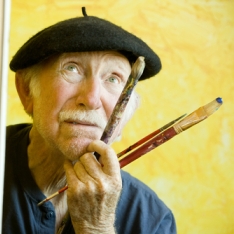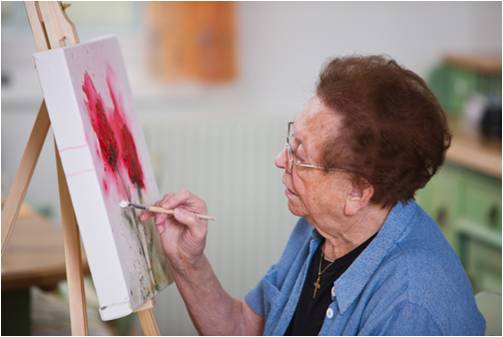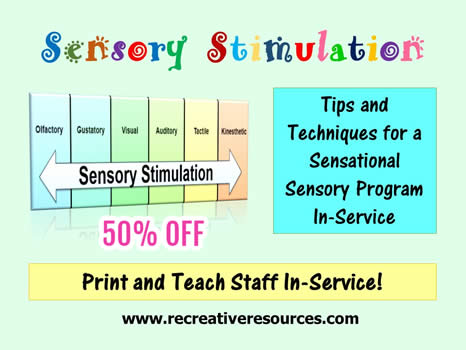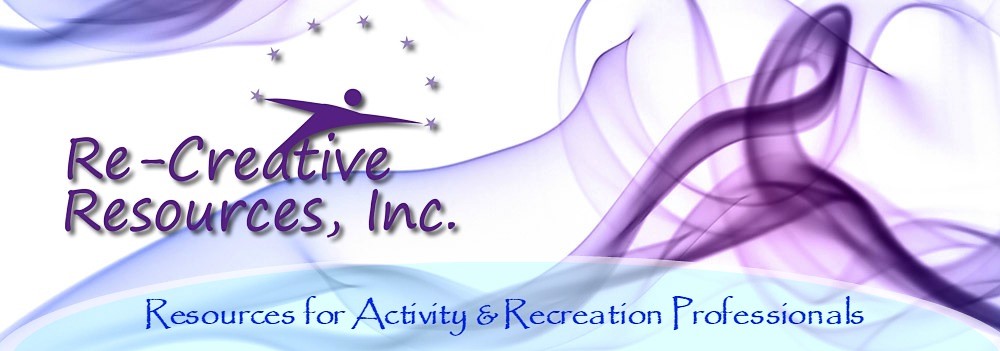 Benefits Residents Can Get from Creating Art Benefits Residents Can Get from Creating Art
- Help increase fine motor skill
- Helps build a sense of community and socialization
- Help to alleviate depressive and anxious feelings
- May help to alleviate some behavioral issues
- Assists in pain management
- Stimulates memory and reminiscing
- Brings fun, education, and enjoyment
through a creative outlet
- Increases a sense of purpose and self esteem
- Increase quality of life!
Benefits of Having an Enriched Art Program at Your
Facility
- Highlight and bring attention to your activities
program
- Art openings and exhibits are fun for everyone and look awesome!
- Be a great marketing tool for you and your facility
- Keep administration, family members, and visitors satisfied
- Be impressive to DOH surveyors, and shows personalized programming choices
- Add a deeper and more meaningful level to your creative programming
- Provide fun self expression, and a creative outlet
- Adds sense of pride and accomplishment (for you and your
residents!)
- Quality of life for your residents!
Some Helpful Hints to Facilitating an Art Group with Seniors
- Make sure there is adequate light available in your work area
- Ensure there is enough room at tables (space for wheel chairs, providing
ample space for each participant as well as the ability for group members to
interact)
- Have all your supplies readily available to stay organized and keep your
residents focused (also, a place to put items after use i.e. dirty paint
brushes, glued projects etc)
- Be sure to have adaptive equipment available if necessary (i.e. for vision
and fine motor challenges)
- Can offer a sample of art task available when able especially for lower
functioning groups. I don’t always do this for higher functioning groups since
I want them to use their own imagination and creativity.
- Bring in related artwork or information when appropriate to ignite
excitement about task.
- Have a goal(s) of what you would like accomplished by group as well as
individuals
- Have clear directives of task and break down steps one at a time for groups
with memory impairment to lessen frustration.
- It is important NOT to leave scissors, paint, glue, etc unattended. In
fact, I do not give out supplies until it is time to use them when running a
group with memory impaired individuals.
- Art can be intimidating for some participants, ensure that their art is
unique and all their own. There is no “right” way to create art!
- It is very important to encourage autonomy and independent decision making
(no matter how simplex the decision may be). Also, try to resist the urge to
take over the resident’s work. You can offer assistance if they have visual
deficits, but try hand over hand and explore the boundaries of the paper to
encourage independence.
- Promote conversation and reminiscing between group members. Ask open ended
questions of group about the art/task/experience.
- Have fun! Encourage people to title their work and sign the front or back
if they desire.
- Always ask permission to share/show each person’s work.
 Sensory Exploration
with Art Materials Sensory Exploration
with Art Materials
Working
creatively with people with moderate to advanced Alzheimer’s can be
challenging. By having an understanding of these challenges, provides us some
wonderful opportunities for connection and exploration.
I will start by saying art
materials are not created equal. That is to say that each one has a specific
order in which it is utilized in the art process. For instance, did you know
there at least 10 steps in using watercolors?! For us, it’s simple. Dip brush
in water and then into paint, then onto the paper. However, this is a difficult
task for someone who cannot make even the slightest movements and has no carry
over memory from second to second. For this reason, we should think carefully
about what materials we are offering. We want to avoid frustration and have
clear goals for what we wish for our seniors to gain from this experience.
Here, I am speaking briefly
on using art materials as a sensory intervention. Not necessarily
making art, but rather using creative materials to add life enrichment and
tactile interest to our programming. I have recently written an article about
when people may no longer be appropriate for art making (see below)…Remember
it’s not one size fits all.
Here are some suggestions
for getting started:
- Work one to one if
you can. Sitting across from or next to your resident while facing
them will offer a connection and provide that necessary relationship for
conversation (even if one-sided) and perhaps hand-over-hand assistance with the
sensory materials. Keeping close helps ensure items do not go into the
mouth.
- Find a quiet space away
from all of the distractions. If you choose to use music, you can select quiet
soothing music in the background or perhaps play various types of music
to encourage mirroring motions between your resident’s movements and the
music!
- Do not focus on the
outcome…Just appreciate the moment and promote autonomy as much as you can. Always allow the resident to make even the simplest choices if they are
able.
- Remember…These are Adults!
It is often easy to fall into the trap of using children’s materials but be very
mindful that you keep it age appropriate. (more on this later)
Here are some ideas for
simple, inexpensive creative materials that are sensory in
nature:
People often ask me about
finger paints and edible materials like pudding paint. I don’t use them. I know
people may not like to hear this. I personally feel it is too childlike and of
course very regressive. Also, many seniors especially when they are living with
moderate dementia, can have an aversion to “dirty hands”. If a resident asks
for it, well of course that’s different. And as always, document all your
interventions.
Here is a project you can do
instead: Marbeling Paint in a Bag. Get a gallon or larger
size ziplock bag. Let your resident pick out some colors (if they can). You
squeeze in several colors and then zip closed. I then use painter’s tape to hold
it down to the table. Let them press and make designs in the bag. It is fun to
watch the colors start to mix and it has such a fun squishy feel! (see
picture)
Play-Doh. Again, I don’t use
it. I would never want to plop down a bunch of play-doh cans on the table. The
label is clearly for children and it’s expensive! There are several great
recipes you can find online for salt dough or home made clay. Try
this…Adding some essential oils to the clay for an aroma-therapy
experience! Add items to the clay for further exploration. Something else I’m
sure you’ve tried is Kinetic sand. I personally can’t keep from playing
with it…It has movement and a silky texture that is so irresistible. Model
magic is also very lightweight and pliable for arthritic hands. Again,
there are online recipes for making your own if you choose not to purchase
it.
Try using colored sand
in a tray and have them swirl it into patterns and perhaps explore various
items to move the sand like a spoon, a mini rake, a paintbrush.
I am a HUGE fan of natural materials. I use them in all of my art groups…all levels of
functioning can appreciate nature’s beauty…Just adapt the task to fit your
people! Sticks, bark, acorns, seed pods, beans, tapioca/rice, dried lavender,
pine cones and needles, leaves, shells etc! You can put these in the sand or
clay or try working together to create a natural collage! Have them
place on a base (wood, heavy paper, cardboard etc) and then you can glue down.
If they are able to help squeeze…let them help glue too!
I always say, anything
textured even simple found objects can be artistic! Use your imagination and let
your residents explore their creativity! It can happen even without words.
Wishing you all peace, love
& lots of inspiring moments in your important work. ~Michelle
Michelle is a devout advocate for person-centered care, combating ageism within sociocultural and health care settings and creating dementia-friendly communities and mindful time spent outdoors to reap the mind, body and soul health benefits from being in and with nature. Contact Michelle at molson@evergreenminds.org, or visit http://www.evergreenminds.org
Sensory Stimulation: Tips and Techniques Staff Inservice - 50% OFF |
 This 60-90 minute introductory inservice is designed to assist the Recreation/Activity Director, or Staff Educator in providing an overview, as well as tips and techniques of sensory stimulation as it pertains to older adults and elders. The inservice comes with a handout, teacher's outline, certificate of attendance, inservice sign in sheet, flyer, interactive exercise, and inservice evaluation form. The educator may wish to split this into 2 sessions. Participants will be able to: This 60-90 minute introductory inservice is designed to assist the Recreation/Activity Director, or Staff Educator in providing an overview, as well as tips and techniques of sensory stimulation as it pertains to older adults and elders. The inservice comes with a handout, teacher's outline, certificate of attendance, inservice sign in sheet, flyer, interactive exercise, and inservice evaluation form. The educator may wish to split this into 2 sessions. Participants will be able to:
*identify residents who would benefit from sensory stimulation.
*identify the A.P.I.E. process and how it relates to sensory stimulation.
*discuss and utilize at least one facilitation technique for each sense.
*recognize resident responses to various forms of stimuli.
*complete a theme-related sensory planning guide.
|
|







